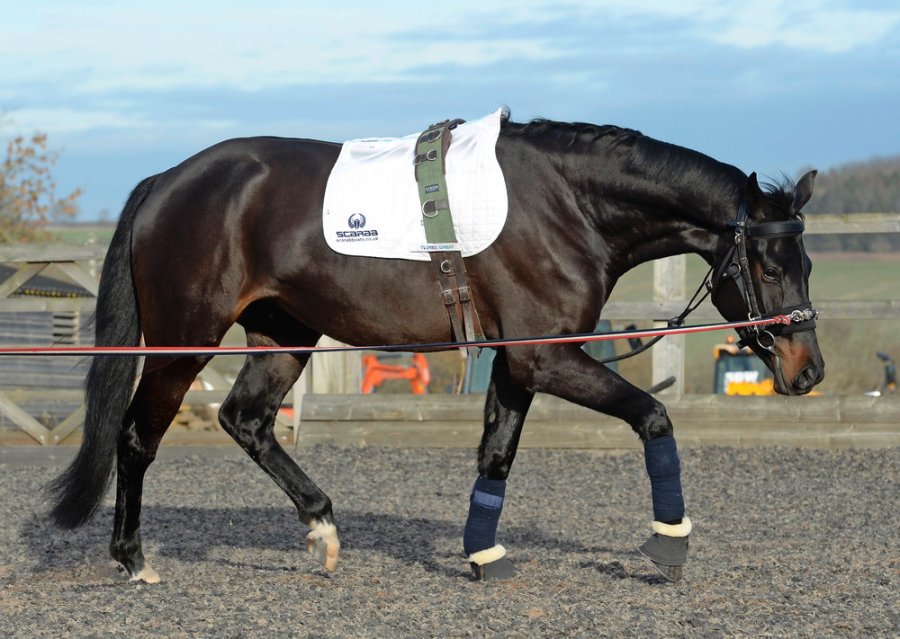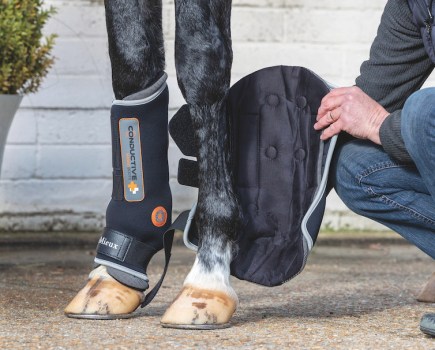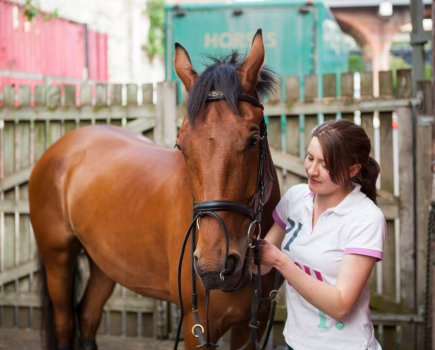A chambon is a training aid that can be used when lunging a horse or loose schooling — it should not be used for ridden work or jumping.
When fitted and used correctly, a chambon encourages the horse to work in a longer, lower outline while using the muscles over their back, quarters and neck.
“A chambon is effective for horses who go in a hollow outline, with their head up, back dropped and quarters trailing,” explains expert instructor and dressage trainer Tara Osborn.
“By encouraging a longer, lower frame, the horse will learn to use their back muscles and engage the quarters. It must be introduced slowly and the horse must be encouraged forward into the contact to get the best results.”
What is a chambon?
A chambon is made up of two nylon cords that sit on the sides of the horse’s face and attach to the bit. It also has a leather headpiece and a leather strap that passes between your horse’s forelegs and loops onto a roller.
The cords clip to each bit ring and then pass up the side of the head and through a loop just below the each ear.
From here, the cords go down to attach to a single strap that passes between the horse’s forelegs and loops onto the girth or roller.
A chambon can be used when lunging a horse or when loose schooling a horse on the flat. It should not be used for ridden work or jumping.
How does a chambon work?
The chambon mainly relies on poll pressure. It acts on the poll and, via the bit, on the corners of the horse’s mouth.
When the horse raises their head higher than desired, the bit is raised in the mouth and poll pressure is applied.
As soon as the horse lowers their head the pressure is removed. In effect, the horse works the chambon.
If your horse’s topline is undeveloped, they need to be encouraged to take their poll down and forwards when working — and the chambon does just this.
By encouraging correct stretching of the horse’s neck, the back muscles, abdominal muscles, topline of the neck and muscles of the haunches all come into play.
As the horse’s back begins to lift they will start to show more engagement by bringing their hindlegs underneath them.
This can be tricky to achieve under a saddle, which is why lunging in a correctly fitted chambon can be helpful.
What is it good for?
Lunging a horse in a chambon can help achieve the following:
- Developing suppleness of the back
- Encouraging a longer, lower frame
- Developing muscle over the back and loins — particularly good for strengthening the muscles used for jumping
- Strengthening the hindquarters
- Developing looseness in the paces through suppleness in the back
- Developing topline
When to use a chambon
The chambon is ideal for the early stages of a horse’s education or in retraining. If a horse has a weak topline, they may be reluctant to stretch through their back.
Lunging in a chambon can encourage a horse that has been moving with a hollow back to stretch their frame down and outwards, and swing their hindlegs further under the body for better engagement.
Fitting a chambon
The correct fitting of the chambon is key. It is not a tool to force your horse to carry their head in a low position.
If a chambon is fitted too tightly, the horse will draw their neck back behind the vertical and become overbent.
If the chambon is too loose, the horse will trail their quarters and little muscle development will be achieved.
The cords should be attached so that the chambon is just taut when your horse is standing normally.
Make sure you don’t fit it too tightly.
When you’re lunging in a chambon, the horse shouldn’t be allowed to slop along with no connection to the contact. Any of these mistakes will lead to the horse working on their forehand.
Main image of a horse lunging in a chambon: copyright Your Horse Library/Kelsey Media Ltd









